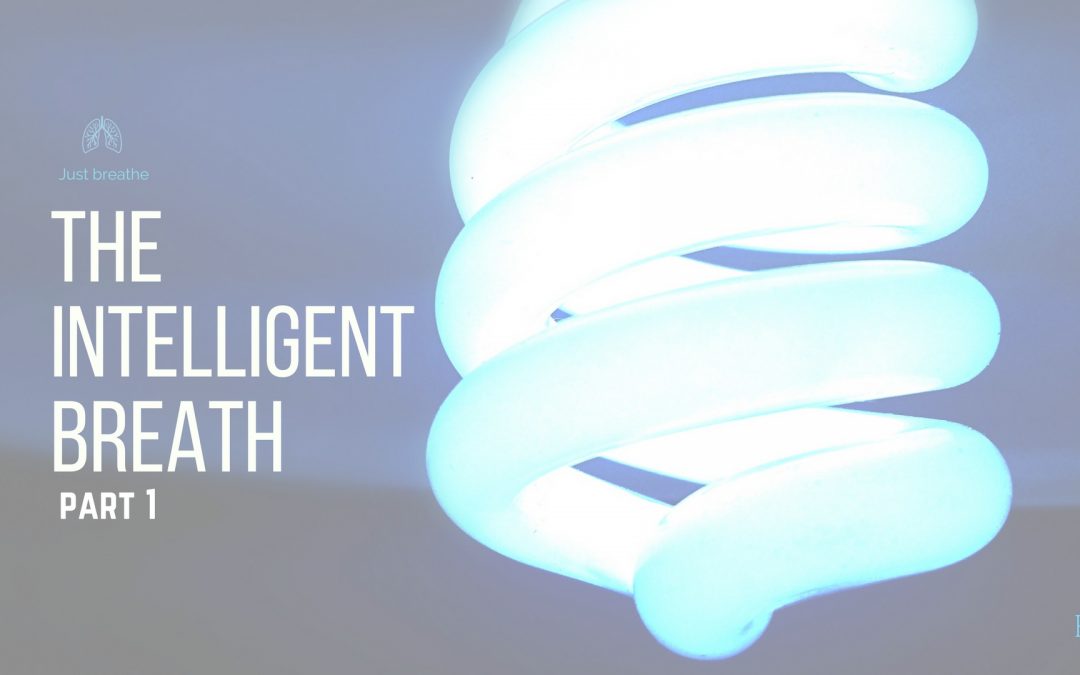The Intelligent Breath
As human beings we all have the right to feel at ease and happy all of the time, we should not be striving for this quality of life, it should just be inherent and here’s why; happy and relaxed people think clearly, are more creative, share closer connections to loved ones, feel better about themselves, live longer and are healthier, while anxious people are more likely to feel isolated, tired, emotional and creatively blocked.
There are a range of reasons we can’t really relax, let go and feel free, for the sake of this article we are going to look at one very particular and often overlooked cycle of behaviour that could be, and may well be the initiator of our neurotic panicked filled existence and it is right under your nose. Your breath.

Don’t Panic
You see our breath is a very powerful indicator of how we feel and how we function and in fact it is said, ‘the quality of the breath determines the quality of the life’. So now that has been pointed out take a second, right now to see how you breathe.
Firstly check is your breath coming from;
a. your collar bone?
b. your chest?
c. your abdomen?
If you answered a, you probably are a pretty stressed out person. Breathing from the collar bone often means not a lot of air is getting into your body, your airway is tight because your muscles in the chest are too tight. This is a form of neurotic breathing and is an indicator of anxiety and stress.
If you answered b, you are not too much better off than a. Chest breathing is the most common breathing habit in the western world and is also a restricted form of breathing . Which means not a lot of oxygen is getting in either, your breath is shallow and your heart is working harder.
If you answered c, you are doing ok. Breathing from the belly is also called diaphragmatic breathing and it means you are experiencing a full breath. When the breath is long and deep the the chest and diaphragm will expand, the belly is relaxed and the metabolic exchanges in the cells are balanced which means fundamentally that you are in balance and so is your brain.
So if you are an, a or b, which most people are, there are some things you ought to know; your breathing habits are stimulating your central nervous system and controlling how you think and feel. The way you breathe actually regulates all the functions in the body and poor breathing means, well poor health.
Short shallow breathing increases the release of stimulants into the blood stream and activates a part of your CNS that keeps you agitated, alert and hyper aroused, which means you have trouble digesting food, connecting with people and you feel anxious.
Good News
The good news is by learning to breathe properly you can reset the body and the mind and begin to balance your imbalances, breathing deeply and fully activates the vagus nerve, which is possibly the most important nerve in the body. It starts in the cranium and weaves its way throughout nearly every major organ in your body and is part of your autonomic nervous system.
Stimulating this nerve increases the release of hormones and proteins into the body and the brain that help us to rest and digest. We also know that the vagus nerve is responsible for releasing an amazing chemical compound called Acetylcholine.
Acetylcholine is a neurotransmitter; it helps to repair brain cells, grow new ones and makes new connections in the brain, so stimulating the release of this chemical will help make us smarter. Acetylcholine is also a feel-good chemical that helps us to bond and feels relaxed.
Guest Contributor: Emily Rack
Business Name: Horatio’s Jar
Publisher: Digital Schools
Emily Rack is a yoga teacher, meditation instructor and freelance writer. She runs yoga and meditation classes, courses and workshops in schools and the wider community & is passionate about teaching the art of mindfulness
——-
PUBLISHER’S DISCLAIMER: The publisher of this blog post (Digital Schools PTY LTD) works in partnership with the school as a 3rd party provider to help build and maintain the school website. Digital Schools sources a range of experts who provide products and/or services to educational institutions and we work with them to produce and publish topical information in the form of blog posts that we think may be relevant, interesting or topical to families within the community. The views, opinions and content listed in this blog post are that of the guest contributor and/or publisher (Digital Schools). It should be noted that whilst the publisher and guest contributors are acting with the best intentions and in the best interests of the school and their community to provide helpful or interesting information, sometimes the content may not necessarily reflect the views of the school.
The information in this blog post is not meant to be used, nor should it be used, to diagnose or treat any medical condition. For diagnosis or treatment of any medical problem, consult your own physician. The school and the publisher of this blog post are not responsible for any person reading or following the information in this article who may experience adverse effects.
Any references to external websites or sources are provided for informational purposes only and do not constitute endorsement by the school or publisher in any way and the publisher and/or school cannot guarantee accuracy of information listed.
If you have feedback on any content on this platform, you can submit it to the publisher using the feedback link provided at the bottom of this page.



